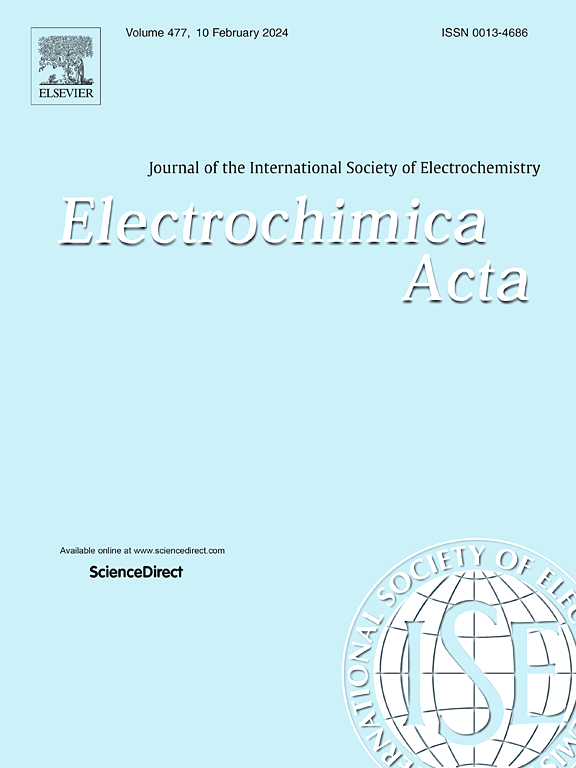基于 Au/MXene/PU 三维支架的集成电化学传感平台,用于实时监测药物刺激下细胞释放 H2O2 的情况
IF 5.5
3区 材料科学
Q1 ELECTROCHEMISTRY
引用次数: 0
摘要
与传统的二维(2D)培养系统相比,三维(3D)培养系统可以更好地模拟细胞在体内的生理环境,提供更准确、实时的数据。虽然许多报道的3D培养支架可以模拟体内微环境,但其在实时电化学传感中的应用仍然受到其绝缘和不可压缩性质的限制。在本研究中,我们开发了一种简单有效的方法来制备三维细胞培养集成电化学传感平台,用于实时监测药物刺激下细胞中过氧化氢(H2O2)的释放。三维集成平台是一种聚氨酯(PU)支架改性MXene和金(Au)纳米颗粒(Au/MXene/PU)。所制备的Au/MXene/PU支架在0.1 ~ 100 μM的线性范围内对H2O2具有良好的电催化性能。将MDA-MB-231细胞培养在Au/MXene/PU三维支架上,原位监测细胞释放的H2O2。这些结果表明,3D Au/MXene/PU支架在细胞体内研究、癌症相关疾病诊断和药物筛选方面具有良好的潜在应用前景。本文章由计算机程序翻译,如有差异,请以英文原文为准。
Integrated electrochemical sensing platform based on Au/MXene/PU three-dimensional scaffold for real-time monitoring of H2O2 release from cells under drug stimulation
Compared with traditional two-dimensional (2D) culture systems, three-dimensional (3D) culture systems can better simulate the physiological environment of cells in vivo, providing more accurate and real-time data. Although many reported 3D culture scaffolds can simulate the in vivo microenvironment, their use in real-time electrochemical sensing still limited by their insulating and non-compressible nature. In this research, we developed a simple and efficient way for preparing 3D cell culture-integrated electrochemical sensing platform for real-time monitoring of hydrogen peroxide (H2O2) release from cells under drug stimulation. The 3D integrated platform was a polyurethane (PU) scaffold modified MXene and gold nanoparticles (Au NPs) (Au/MXene/PU). The prepared Au/MXene/PU scaffold showed excellent electrocatalytic activity for H2O2 with a detection linear range of 0.1 to 100 μM. Furthermore, MDA-MB-231 cells were cultured on the 3D Au/MXene/PU scaffold and H2O2 released by cells were in situ monitored. These results indicate that the 3D Au/MXene/PU scaffold exhibits excellent potential applications in cell in vivo research cancer-related disease diagnosis and drug screening.
求助全文
通过发布文献求助,成功后即可免费获取论文全文。
去求助
来源期刊

Electrochimica Acta
工程技术-电化学
CiteScore
11.30
自引率
6.10%
发文量
1634
审稿时长
41 days
期刊介绍:
Electrochimica Acta is an international journal. It is intended for the publication of both original work and reviews in the field of electrochemistry. Electrochemistry should be interpreted to mean any of the research fields covered by the Divisions of the International Society of Electrochemistry listed below, as well as emerging scientific domains covered by ISE New Topics Committee.
 求助内容:
求助内容: 应助结果提醒方式:
应助结果提醒方式:


